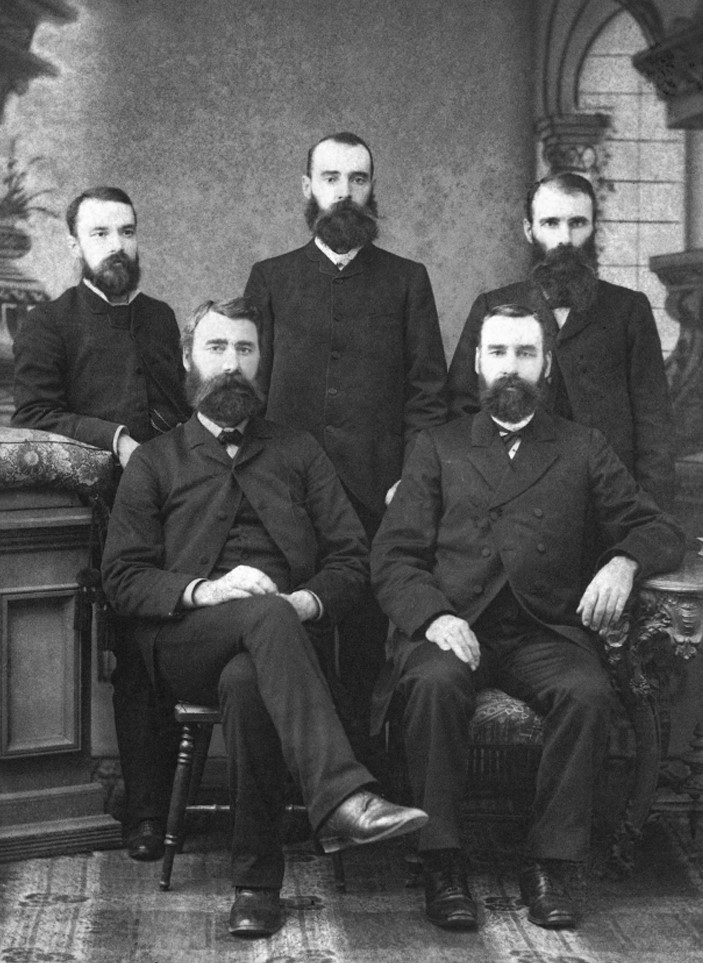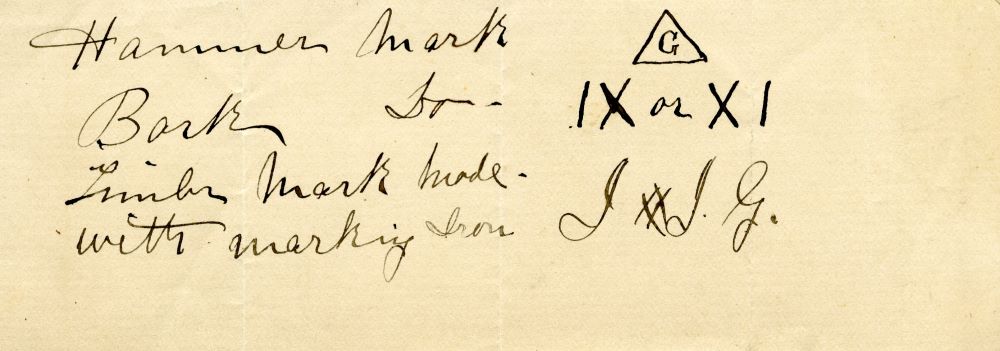James Scott (Gillies Bros. Bookkeeper) 1870-1879

Sons of John Gillies and Mary Cullen Bain: Standing (l-r): George Ackland Gillies (1851-1913), David Gillies (1849-1926), John Gillies (1846-1914). Seated (l-r): William Gillies (1841-1915), James Gillies (1840-1909), circa 1905. Photographer unknown. A sixth son, Alexander Munroe Gillies (1856-1878) died at age 22 from drowning.
As head bookkeeper, James needed to find a way for the company to survive. The downturn in the world economy started almost as soon as the firm was purchased in 1873. He was going to recommend that the brothers withdraw only $50.00 per month and close the mill this season. Mr. William Gillies had already agreed to concentrate on marketing rafts of square timber in Quebec, but trade is flat and cash is scarce.
James worried about the future for the 35 families that depended on the mill for their livelihood. He tallied up Braeside’s assets: 26 new houses, two stores, Mr. McDonald’s hotel, a blacksmith, carpentry shops, storehouses, ice houses, etc.
Edward, his own son, was attending the fine school that Mr. Usborne financed back in 1870. James had tried to educate his son about the lumber business, but the intricacies involved in bookkeeping – boom charges, slidage and Crown dues – were too much for his young mind to comprehend.
His mother told him not to worry, for his penmanship was coming along nicely. Last time Edward visited the office, he spotted the firm’s lumber marks on a slip of paper. He wanted to know what the ‘G’ in the triangle meant. James explained to Edward how these very marks put food on the table. That succeeded in capturing his interest!


